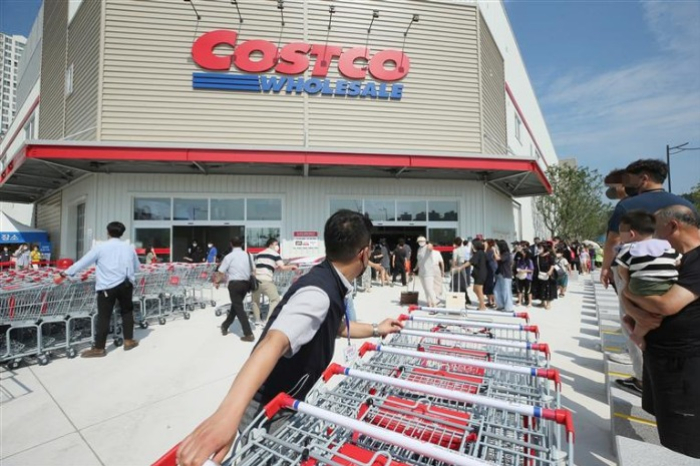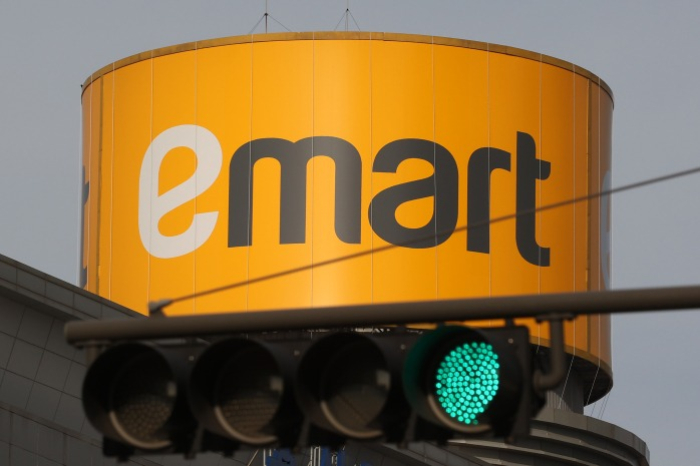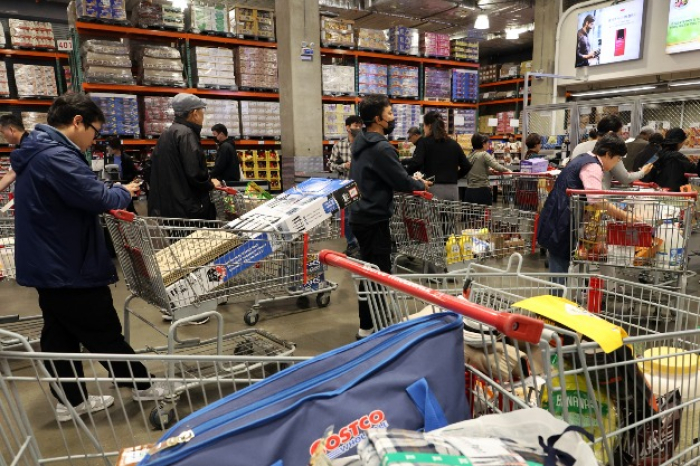
Membership fees could not deter cost-conscious South Korean consumers from rushing to Costco stores to buy big-box items at lower prices, leading the US warehouse store giant to outdo Korean retail rivals grappling with dwindling sales in the aftermath of inflation shocks.
According to Costco Wholesale Korea’s filing of its financial and income statements for the fiscal year of 2024 ended Aug. 31 to Korea’s Financial Supervisory Service on Tuesday, it reaped 218.5 billion won ($156.8 million) in operating profit and 6.53 trillion won in sales, up 15.8% and 7.6%, respectively, from the prior fiscal year.
The Korean operation of Costco Wholesale Corp. outperformed most of its Korean retail peers, which have suffered falling sales and profits.
The country’s largest supermarket chain operator E-Mart Inc. saw a 2.5% loss in sales for the first three quarters of this year. Its operating profit dropped 8.6% to 66.8 billion won over the same period.
Another homegrown retail giant Lotte Mart’s operating profit and sales also shrank 2.4% and 4% on-year to 71.7 billion won and 4.11 trillion won, respectively.
Costco’s Korean operation outpaced native Korean retail giants in the average sales per store, which hit 343.6 billion won.
This is four to five times bigger than that of Korean big-box stores.

Costco Wholesale Korea operates 19 stores across Korea, but its sales for the fiscal year 2024 beat last year’s sales of Lotte Mart, which runs 111 stores, by about 1 trillion won.
The US big-box store’s result in the Korean market came as a surprise, shrugging off previous concerns that its sales in Asia’s No. 4 economy could stagnate this year amid fierce competition from online stores like Coupang Inc.
MEMBERSHIP FEES OFFSET LOW PRICES
Costco’s ability to offer products at lower prices has been the main driver of its Korean operation’s sustainable sales growth for years.
The US parent buys products in bulk to distribute them to its 891 stores across the globe, a secret for lower prices of products sold in Costco stores in any country.
It also limits the number of product choices offered in each store, allowing a typical Costco store to stock 4,000 types of items.
This is almost one-tenth of Korean big-box stores’ item stocks but the limited number of items can maximize the benefits of its small profits and quick returns strategy, industry analysts said.
Costco Wholesale Korea also targets a 15.1% profit margin per product, which is relatively lower compared to other Korean retailers such as E-Mart with 26.9%.
Despite such a low margin, Costco enjoyed handsome profits thanks to its membership fees.
The membership-based warehouse club collects 38,500 won for a basic membership fee in Korea and 80,000 won for a premium membership fee.

The US parent raked in $4.8 billion profit from membership sales in the fiscal year of 2024, accounting for more than half of its entire annual operating profit.
Its online store sales also fared better than expected in the year with a 16.2% growth.
Despite higher price tags for the same products sold in stores, its club members in Korea still opted for online products that can be purchased by non-member consumers to enjoy its same-day delivery service.
ROSY OUTLOOK FOR COSTCO
The outlook for Costco’s business, including its Korean operation, looks bright as cost-conscious consumers are expected to continue to look for bang for their buck for a while.
Its sales in other countries, including its home the US, as well as Canada and Japan, increased, helping the US parent to see a 5.9% rise in consolidated sales to $249.6 billion in the fiscal year of 2024.
Its stock flew high with a 58.3% gain over the past year, reflecting high expectations for its business prospect, which is in stark contrast to Korean retail stocks on the downhill over the same period.
By Jae-Kwang Ahn
ahnjk@hankyung.com
Sookyung Seo edited this article.














